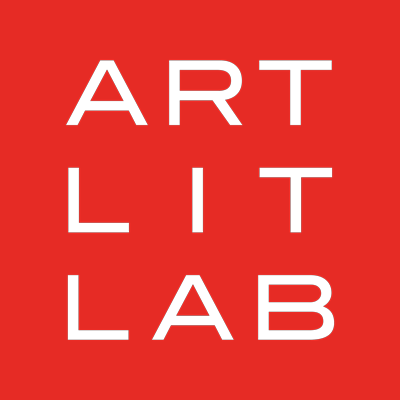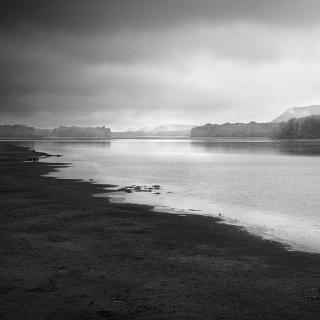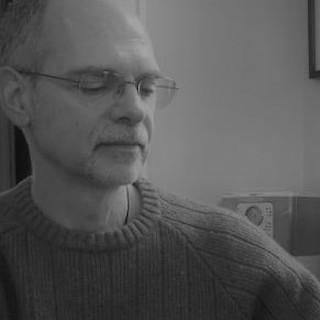Arts + Literature Laboratory presents Driftless River: Photographing the Lower Wisconsin, an exhibition by Rich Maciejewski, from November 28th, 2023 through January 5th, 2024. The exhibition will be on display on the second floor mezzanine, next to the Small Press Library.
Whether art can capture the diverse human emotions and personal connections to places has occupied photographer Rich Maciejewski for over 30 years. One of his earlier projects called Spirituality and Placeexplores this preoccupation through photographs of roadside memorials, shrines, rituals, and nature preserves. Driftless River: Photographing the Lower Wisconsin, on display at the Arts + Literature Laboratory mezzanine gallery until January 5, 2024, might be regarded as a deeper dive into the emotional, personal, and spiritual connections to natural places. The photographs in this exhibition were taken from boat landings, shorelines, and cliffs along the lower Wisconsin River, a predominately wild and natural area of 95,000 acres.
While working on this project, Maciejewski observed that on weekdays he nearly always had the land and the river to himself. “You can turn 180, sometimes 360 degrees around and not see anyone…Once an eagle launched itself from a branch about six feet above my head. Depending on the season, you commonly see herons, geese, ducks, sandhill cranes, snakes and various amphibians. You hear owls, but don’t often see them. Deer and other mammals kept to themselves.” This solitary immersion created a sense of timelessness for Maciejewski, and by returning to these photographic locations in all four seasons, over a two-and-a-half-year period, he was able to observe cycles of damage and renewal.
Although Maciejewski used color effectively in Ukiyo-e Wingra, a photographic project that brought out subtle tints in winter landscapes, he decided that “… color was mostly irrelevant to what I wanted to say [in Driftless River]. Many of the photos lean toward the symbolic, which is how I think black and white tends to be read, compared to the specificity of color.”
Seeing these remarkable black and white prints might bring to mind the 1930s documentary film The River. Like a documentarian, a photographer must often work in the moment, and that moment may hold immense subtlety or sudden “blink and you’ll miss it” activity. “You walk along, something catches your eye, your mind recognizes and names that something, and you decide whether it’s worth shooting,” said Maciejewski; “The creative problem is that by naming the ‘something,’ you tend to see it in a way predetermined by previous experience. It can fight seeing the uniqueness of the ‘something’ as it is, that particular moment. There’s a lot of intuitive shooting In Driftless River. You might say I was trying to shoot in a space between the moment of perception and the act of recognition. Once I was aware of something catching my eye, I made the picture without defining the experience or passing judgement on whether it was worthwhile. I deferred the critique for later in the editing process.”
In “Flocking Birds, Bakken’s Pond,” taken in February, amid glistening snow and bare tree branches, a flock of birds takes flight in an alternately foreboding and elegiac sky. Similarly, there is immediacy in the otherwise artful and serene composition “Junction of the Big Green and Wisconsin Rivers near Woodman.” Here, a mirror-surfaced river reflects a ray of sun peeking though a large, bulbous, multi-hued cloud. Although there is evident stillness, we sense that in a matter of seconds there could be a different photo.
The symbolic use of reflection is rendered elegantly in two other pieces. “Paffenrath Slough, Muscoda” places a lone tree in the center. This otherwise scruffy tree—perhaps a Box Elder that has taken root on a sand bar—is reflected in a calm pool of water bordered by lily pads. A second focal point, toward the middle right of the composition, shows a reflection of bright sunlight breaking through morning mist. Reflection becomes one of four beautifully integrated layers in “Fish Trap Foliage.” The topmost shows a gathering in the sky of small, fluffy clouds, but when reflected in the still water on the bottom layer, the contrast between clouds and sky becomes more apparent and dramatic. The middle two layers feature a silhouetted row of trees behind a row of delicately tangled brush.
The use of layers—visual, symbolic, and actual—are evident in “Low Water, Arena Landing.” Beneath the top layer of overcast sky is the darkest of the three layers, a shoreline of thick yet detailed trees, which seem to be gathered in curiosity or trepidation over what is revealed in the bottom layer of the photo, a riverbed exposed after a stretch of August drought. Where there was once a strong river current is now a pattern of glossy ripples, surrounding smooth patches of sand.
There is a similar mood of curiosity evoked in “Trail, Arena Landing,” featuring an ethereal looking dirt path winding and disappearing into thickets of wildflowers, brush, and oak leaves.“The variety of native plants is exciting,” Maciejewski observed, “Our prairie legacy still has a toehold, if just barely.” Beyond the foliage is a distant, faint outline of a bluff fading upward into the sky. Judging by the tone variation in the trees, the shot may have been taken in autumn.
“For this project, [I used] one lens (a 24-70mm zoom), one body (a full frame digital single lens reflex), and a tripod,” said Maciejewski. Nearly all the photos were taken using natural light and without filters. “When I print, I’ll sometimes alter color-channels in order to affect the contrast and tone of the final black and white print. It renders the same effect as using a camera filter but with more control.”
Several of the photos in Driftless River feel like wistful parting shots taken after an interval of undisturbed contemplation. In “Early Spring near Peck’s Landing,” the buds, sprouting on the saplings and more established trees, look alive, as if they could become the beetles featured in “Whirligig Beetles, near Woodman.” A poignant memorial to someone identified simply as Bill is the subject of “Beuna Vista Landing, Gotham.” We may wonder if the main image—a bark-stripped tree on which a small wooden cross has been nailed and shrouded in the center by a baseball cap—was once a favorite place to fish. We may wonder if the date on the cross, which falls during the second year of the pandemic, has significance. We may notice that this is the one photo in which the river, now visibly high, busy, and dangerous, is slightly blurred.
During his December 7th artist’s talk at the ALL Gallery, Maciejewski provided the perfect epigraph for all the images in this installation, quoting from Dennis Covington’s Salvation on Sand Mountain: “Mystery… is not the absence of meaning, but the presence of more meaning than we can comprehend.”


